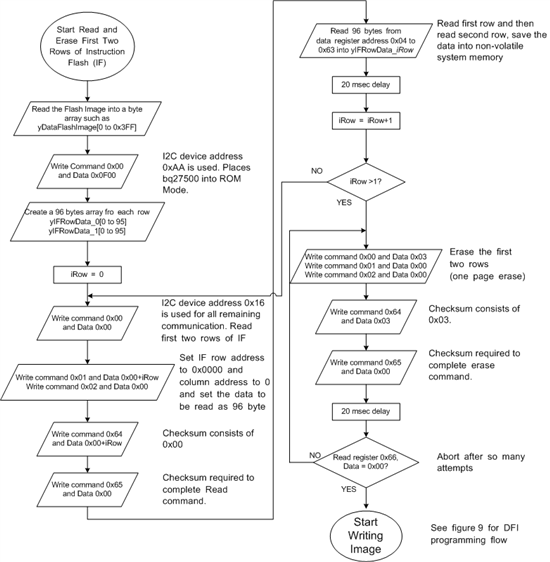Hi,
We are using a BQ27500 monitor chip and we have with us a golden image file supplied by TI for our batteries.
We have followed slu449d.pdf for programming the golden image to the chip.
We try to program the BQ27500 chip and are unable to access any register access with address 0x55
after we program the chip in ROM Mode.
The following 5 steps are successful. I2c writes DONT report any errors.
1) Enter ROM Mode (I2C Address is 0x55)
2) Copy First 2 rows of instruction flash contents and Erase 2 rows of Instruction Flash. (I2C Address is 0x0B)
3) Writing Image - T(Also the DFI Checksum matches with Read Back Checksum on the chip) (I2C Address is 0x0B)
4) Reprogram the First 2 rows of the instruction flash (I2C Address is 0x0B)
5) Exit ROM Mode and Write Bytes 0x64 = 0x0F and 0x65 = 0x00 are successful. (I2C Address is 0x0B)
The i2c writes dont report any errors.
The issues is the chip never exits out of ROM Mode. Any reads/writes to 0x55 addresss returns -5.
What could be the issue?
Also, If i omit the Step 1 (Enter ROM Mode) - I can program the image again and again without any issue.
but unable to come out of the rom mode.
I suspect that the BQ chip is unable to exit the ROM Mode for some reason.
What are the steps to put the chip back into a default state?
Please advice.
Thanks and Regards,
Sriram V.


